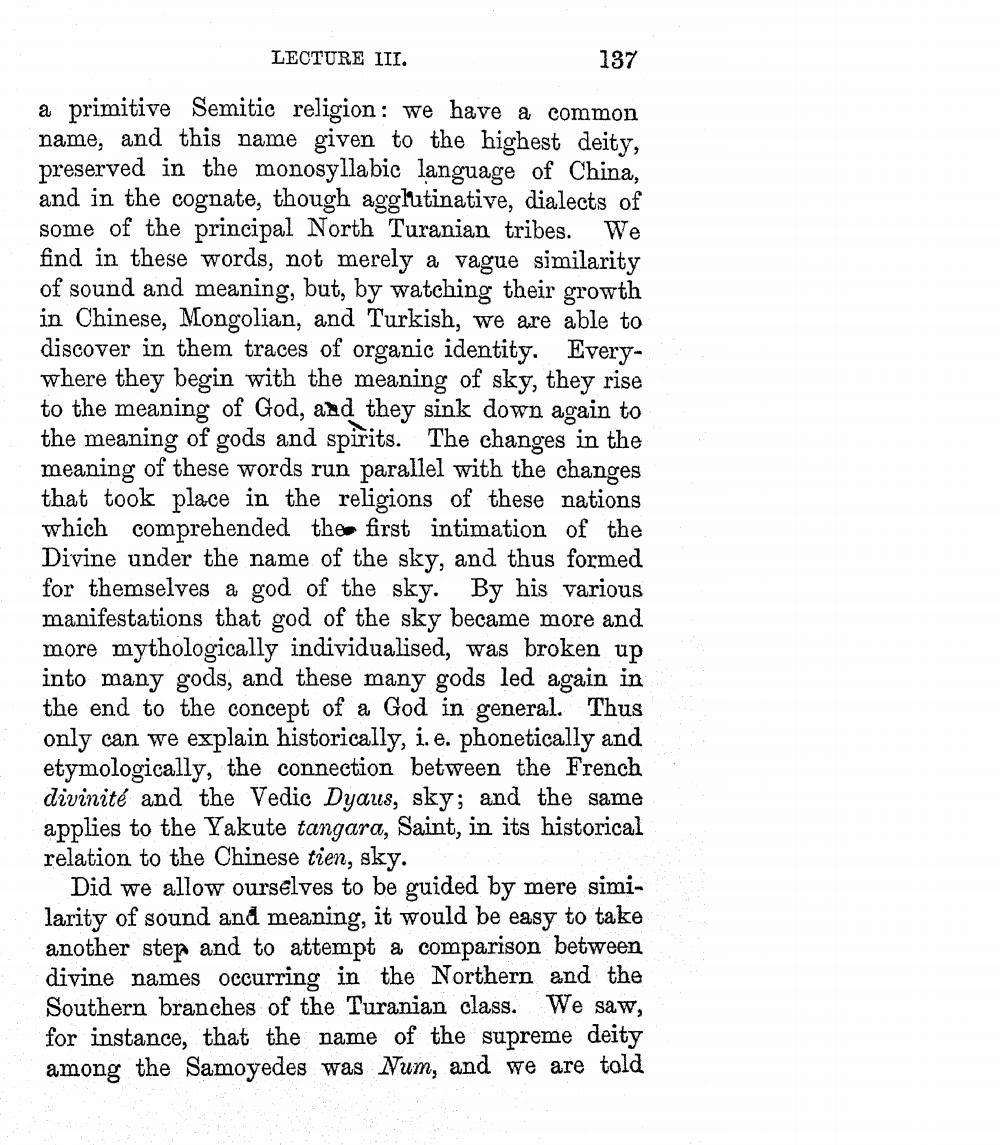________________
LECTURE III.
137
a primitive Semitic religion: we have a common name, and this name given to the highest deity, preserved in the monosyllabic language of China, and in the cognate, though agglutinative, dialects of some of the principal North Turanian tribes. We find in these words, not merely a vague similarity of sound and meaning, but, by watching their growth in Chinese, Mongolian, and Turkish, we are able to discover in them traces of organic identity. Everywhere they begin with the meaning of sky, they rise to the meaning of God, aad they sink down again to the meaning of gods and spirits. The changes in the meaning of these words run parallel with the changes that took place in the religions of these nations which comprehended the first intimation of the Divine under the name of the sky, and thus formed for themselves a god of the sky. By his various manifestations that god of the sky became more and more mythologically individualised, was broken up into many gods, and these many gods led again in the end to the concept of a God in general. Thus only can we explain historically, i.e. phonetically and etymologically, the connection between the French divinité and the Vedic Dyaus, sky; and the same applies to the Yakute tangara, Saint, in its historical relation to the Chinese tien, sky.
Did we allow ourselves to be guided by mere similarity of sound and meaning, it would be easy to take another step and to attempt a comparison between divine names occurring in the Northern and the Southern branches of the Turanian class. We saw, for instance, that the name of the supreme deity among the Samoyedes was Num, and we are told




